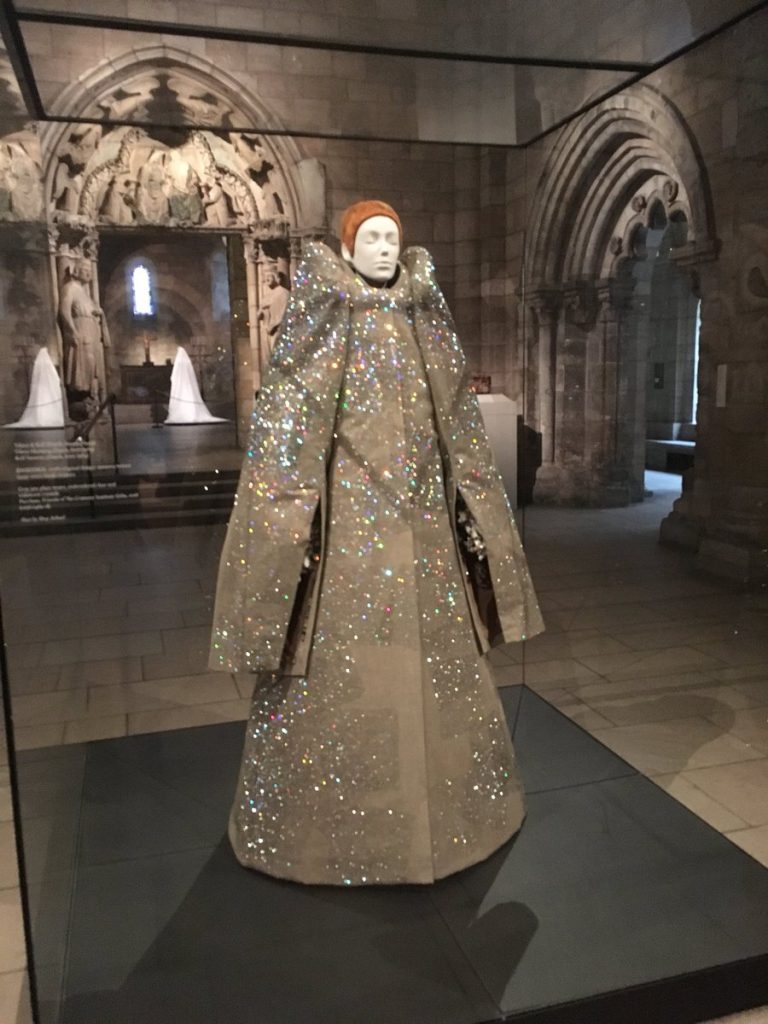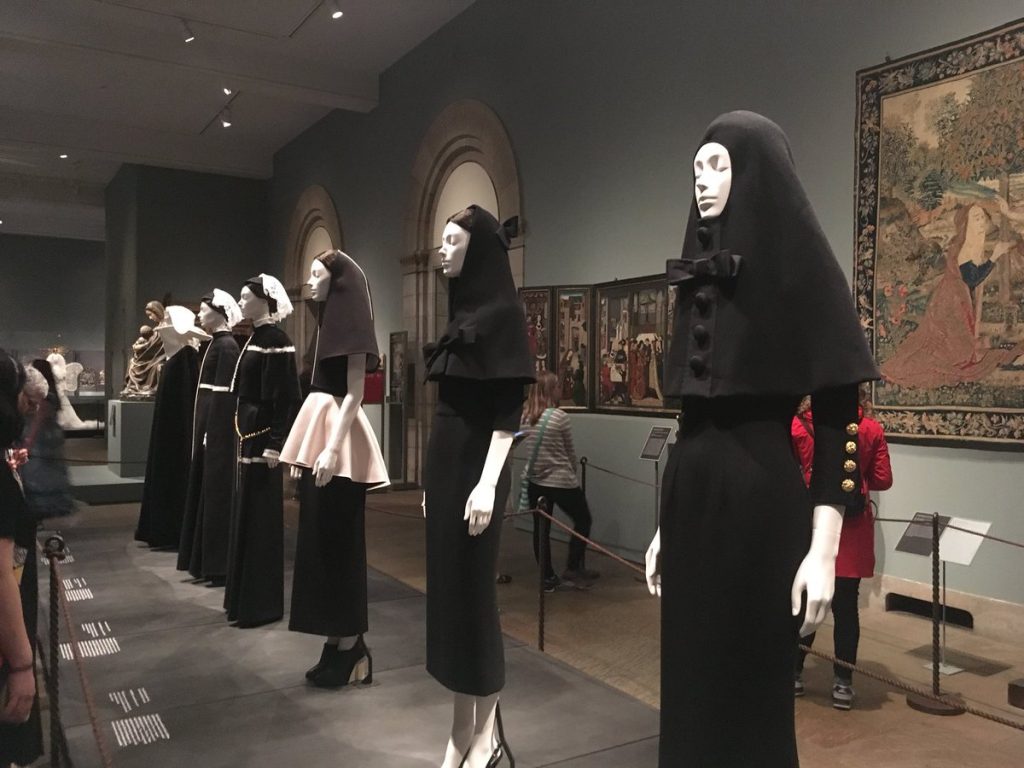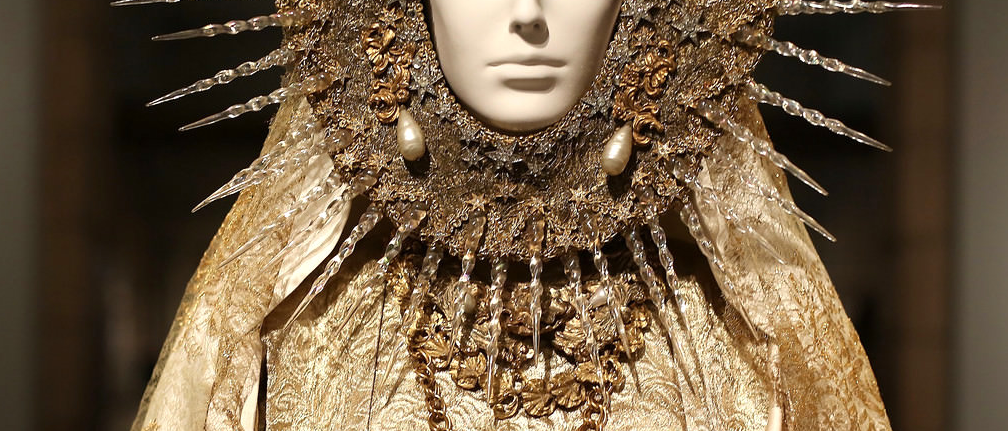The steps leading up to the front entrance of the Metropolitan Museum in New York are always busy, but are probably rarely so photographed as they are on the evening of the annual fund-raising gala in support of its Costume Institute. That was doubly true last month, when the Met Gala attracted extra column inches thanks to its theme, “Heavenly Bodies: Fashion and the Catholic Imagination.” Was it intriguing and inspirational, or trivialising and offensive?
The frisson of controversy ensured that social media lit up as the first red carpet photos appeared online—that and the elaborate celebrity outfits. Madonna appeared in a Gothic take on Sicilian widow’s weeds, Jared Leto channelled a louche version of Jesus Christ, Superstar which honestly wasn’t so far from his everyday dress sense, while Chadwick Boseman was attired as a particularly suave pope. Others came as angels, or Byzantine icons, or Sistine Chapel ceilings.
The looks attracted amusement, admiration, and criticism. Olivia Munn’s clumsy description of her gold mail dress (“…inspired by the Crusades. I love this dress”) was thought distasteful by some, while Piers Morgan claimed to be offended by the entire event. (Well, Piers would, wouldn’t he.) More interesting conversations, however, centred on the (art) historical references in the attendees’ attire, like Rihanna’s boldly irreverent spin on papal attire, or Zendaya’s silvery dress and severe pageboy hairstyle which echoed nineteenth-century takes on Joan of Arc.
Albert Lynch, ‘Jeanne D’Arc’, c. 1903 // Zendaya at The Met Ball, c.2018 pic.twitter.com/ooUWbcaMJV
— TabloidArtHistory (@TabloidArtHist) May 8, 2018
In my little corner of the Twitterverse, many medieval historians were delighted to see the Middle Ages, high fashion, and pop culture juxtaposed in such a prominent way, and yet equally wondered why it was that so many attendees had interpreted the gala’s theme to mean something both medieval and western European? There were exceptions, of course. Some wore starker outfits that seemed to take their references from the clerics and religious sisters of the Counter-Reformation period and beyond—but this was a shift in chronological focus, not in geography. Where were the tributes to the exuberant colours of Latin American Catholicism, or to the vibrant church in Africa, or to the heavy influence that the faith has had on the art and culture of the Philippines? Hundreds of millions of modern Catholics and their faith traditions were largely ignored.
And given the focus on medieval Catholicism, why was there so little room for subversion or critique? After all, there’s a tradition, almost two centuries old, of adopting medieval clothing styles to further feminist critiques. Certainly Lynda Carter made a statement with a golden Star of David barette and a crown that proclaimed “Never forget” in Hebrew, as did Lena Waithe in her suit and cape in the colours of a racially-inclusive pride flag, but they were in the distinct minority. Frankly, I was surprised no one even tried for a cheeky spin on a Catholic schoolgirl outfit.
When I trotted up the steps of the Met Museum a few days ago, it was to a whole lot less fanfare than had greeted the Met Gala guests and without a $30,000 ticket clutched in my hand. (No, admission to a high-profile event thrown by Vogue editor Anna Wintour doesn’t come cheap.) I was curious to see how the exhibition proper had interpreted the theme—had the celebrity attendees’ choices presaged it, or had the curators made some very different choices?
The short answer is that the exhibit runs along very similar lines to the gala. To an extent, I’m sure, this is a function of the space within which the exhibition is housed (the permanent medieval galleries of the Met proper, and the museum’s branch at the Cloisters which is dedicated to the art and architecture of the Middle Ages), of a large number of the objects on display being direct loans from the Vatican’s historic collection of vestments, and of the fact that the couture designers most likely to draw on a Catholic aesthetic in their work are from white, western backgrounds.

And clearly a lot of thought was given to the layout of the exhibit and the objects to be displayed. Hieratic statues of the Virgin and Child were placed either side of an austerely cut gown; an Alexander McQueen confection of gauze and faux armour was placed, recumbent, opposite the tomb effigy of a high medieval knight. The sleek, sweeping curves of three hats by Philip Treacy invited comparison with the late medieval reliquary busts of three virgin martyrs and their elaborately coiffed hair.
But while I thought that many of the individual garments were stunning (oh, to have the resources and the occasion needed to sport a black Alexander McQueen dress with full-length train over a pair of leather motorbike trousers), and some of the arrangements of objects thought-provoking, as a whole the exhibition left me asking the same questions as had the Met Gala: why was such a limited story being told?
The artistic impact of global Catholicism was absent, and there was little sign here that any artist has ever been moved to reject Catholicism or defy the Church. There was apparently no room in this exhibition for, say, a screen showing the video for Lady Gaga’s 2010 hit “Alejandro” (in which Gaga, dressed as a nun in a red latex habit, swallows a pair of rosary beads; maybe not one to watch with your nana) or a mannequin displaying one of the see-through outfits she’s been known to pair with a nun’s cornet while onstage (you probably don’t want to click on that link while at work).
This is not an exhibition particularly interested in ideas of conflict or resistance.

The exhibition is interested in the relationship between fashion, faith, and power, but it seemed to me mostly in some very particular ways: the ways in which dress can be used to assert allegiance, hierarchical status, and gender roles.
Perhaps this is why celebrities were so quick to equate “Catholic” with “medieval” in their clothing choices for the gala. After all, in popular culture the Middle Ages are associated with showy displays of power, with monolithic identity, with exclusion—and what’s better suited to modern celebrity than that?
